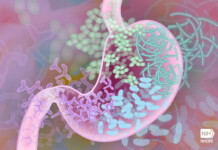By Katherine A. Beals, PhD, RD, FACSM, CSSD
Minerals are not only critical constituents of the earth (making up a majority of the earth’s crust), but are essential to the structure and function of the human body. Minerals are key components of body tissues and are involved in a number of physiological and metabolic roles that can impact athletic performance including muscle contraction, cardiac function, nerve impulse conduction, oxygen transport, enzyme activation, immune response, antioxidant activity, and acid-base balance.
The human body needs about twenty different minerals in order to function properly. And while all are important in one way or another for optimal athletic performance, certain minerals are particularly important because (a) they play a critical role muscle metabolism or (b) athletes are at increased risk for deficiency. These minerals include calcium, iron, zinc, magnesium and sodium.
Calcium
With 99% of the body’s calcium found in the bones and teeth, it is no wonder that one of the primary functions of this mineral is to provide density and strength to the skeleton. Nonetheless, the remaining 1% of body calcium which is found in the extracellular fluids, intracellular structures, cell membranes and various soft tissues (including muscle tissue) also has important functions particularly with respect to exercise. For example, calcium is required for nerve transmission as well as muscle contraction. In fact, it has been hypothesized that one of the primary causes of muscle fatigue during endurance exercise is an alteration in intracellular calcium exchange. Nonetheless, inadequate calcium intake is unlikely to negatively affect muscle contraction or nerve transmission because, if necessary, the muscles can draw on the vast reserves of calcium found in the bones and teeth. Thus, the more likely danger of inadequate calcium intake is low bone density, which increases the athlete’s risk of stress fractures and pre-mature osteoporosis.
As described in a previous article, cyclists tend to be at risk for low bone mineral density; thus, meeting the RDA for calcium is particularly important for them. Foods naturally rich in calcium include dairy products, green leafy vegetables and some nuts and legumes. In addition there are a variety of foods and beverages on the market that are fortified with calcium including certain brands of orange juice, oatmeal and other breakfast cereals, breads, and sports drinks and sports bars.
Iron
Iron is an integral part of hemoglobin and myoglobin, which are essential for oxygen transport to and storage within the working muscle. Iron also functions in energy production and oxidative metabolism; thus, rendering it a key mineral in athletic performance. Endurance athletes, particularly female endurance athletes, are at an increased risk for iron deficiency due to increased needs (i.e., muscle tissue repair and RBC synthesis) as well as increased losses (e.g., iron lost in sweat and blood). Inadequate intake of iron-rich foods can also increase an athlete’s risk of iron deficiency. The most bioavailable form of iron (heme-iron) is found in significant amounts only in red meats (including liver). Non-heme iron, which is the only form of iron found in plant foods (e.g., fortified cereals, beans, legumes, green leafy vegetables), has a very poor bioavailability (the absorption of non-heme iron is less than 6%). Thus, an endurance athlete who relies on plant sources of iron (and does not consume red meat) has a very high risk of suffering from iron deficiency.
The hallmark symptoms of iron deficiency anemia in the athlete include extreme fatigue, decreased aerobic capacity and increased susceptibility to infections, illnesses, and injuries. The research is somewhat controversial with regards to whether or not iron deficiency without anemia produces overt symptoms or negatively impacts athletic performance. Nonetheless, possible performance decrements aside, athletes with non-anemic iron deficiency should strive to increase their intakes of iron-rich foods—including lean red meats– to prevent the development of iron deficiency anemia. For athletes with anemia, dietary alterations are generally insufficient to correct the deficiency and supplementation will likely be necessary. Nonetheless, because excess iron is toxic, iron supplementation should only be carried out if recommended and supervised by a doctor or registered dietitian (RD).
Zinc
Zinc is essential for the activity of more than 300 enzymes in the body, some of which are involved in muscle function and energy metabolism. Zinc also plays a role in thyroid hormone production (and, thus, impacts metabolic rate) as well as immune function, which explains its popularity as a supplement for treating colds. Approximately 60% of the total body zinc is found in muscle, leading many athletes to think that zinc supplementation will enhance athletic performance. Unfortunately, research does not support a performance benefit from supplementing with zinc in athletes who are already getting adequate zinc in their diets. Nonetheless, because the richest and most bioavailable sources of zinc are animal products (meat, fish, poultry), athletes who restrict these foods from their diets may be at an increased risk for zinc deficiency. These athletes should make a conscious effort to consume plant foods that are rich in zinc including fortified cereals, whole grains and legumes. Excessive intakes of zinc supplements (just 3-4 times the RDA) can be toxic; thus, athletes should be discouraged from supplementing unless advised to do so by their physician or an RD.
Magnesium
Like zinc, magnesium is essential for the function of numerous enzymes, many of which are involved in energy metabolism. In addition, magnesium plays a role in a number of processes that affect muscle function including muscle contraction, oxygen delivery, and protein synthesis. It is not surprising then, that magnesium deficiency will impair athletic performance. There is evidence to suggest that strenuous endurance exercise can increase magnesium losses (via urine and sweat), which could theoretically increase requirements. Moreover, dietary survey data indicates that certain athletes, particularly female endurance athletes, have inadequate intakes of magnesium, which could predispose them to deficiencies.
There is some limited research suggesting that supplementing with magnesium may improve muscle strength and cardiorespiratory function in athletes; however, in these studies it was unclear whether supplementation was simply correcting a deficiency (because magnesium status was not assessed). Most studies have shown that supplementation will not improve performance in athletes who are in good magnesium status. And, since magnesium toxicity has only been shown in cases where individuals consumed magnesium supplements, it behooves any athlete who is concerned about his/her magnesium status to increase their intake of magnesium rich foods including nuts, legumes, beans, green leafy vegetables (particularly artichokes) and whole grains (especially oats and barley).
Sodium
For the majority of the Americans, it is excessive not inadequate intakes of sodium that is a problem. But, for athletes, who can lose several hundred milligrams of sodium in sweat during exercise, low blood sodium levels (known as hyponatremia) can be a series, life-threatening issue. This is particularly true for athletes who sweat a lot or have high sweat sodium concentrations (often referred to as “salty sweaters”). Other factors that predispose an athlete to hyponatremia include, exercise duration (i.e., greater than 4 hours), high ambient temperatures, low body weight, being female and use of non-steroidal anti-inflammatories (NSAIDS).
Athletes at risk for hyponatremia should pay particular attention to their fluid consumption and carefully match fluid intake to sweat losses, thereby avoiding hyperhydration, which can lead to hyponatremia due to a dilution effect. In addition, athletes should be sure to obtain adequate dietary sodium either via meals or strategic consumption of salty snacks (assuming, of course, they are not hypertensive).
The Bottom Line
Inadequate intakes of the minerals described above will most certainly compromise health and likely impair athletic performance; thus, athletes would be well advised to ensure that they are receiving adequate amounts of these minerals in their diets. An energy (i.e., calorie) sufficient diet containing plenty of fruits, vegetables, whole grains, lean meats, legumes and dairy products (or dairy alternatives) will provide most athletes with adequate amounts of all the essential minerals. Unless an athlete is deficient in a mineral, supplementing will not improve performance and may be harmful as most minerals are toxic in high doses.
Table 1. Mineral Requirements for Adults (19-50 yr.)
Mineral RDA/AI UL
Calcium Males 1000 mg/d; females 1000 mg/d 2500 mg/d
Magnesium Males 400-420 mg/d; Females 310-320 mg/d 350 mg/d*
Sodium 1500 mg/d 2300 mg/d
Iron Males 8 mg/d; females 18 mg/d 45 mg/d
Zinc Males 11 mg/d; females 8 mg/d 40 mg/d
*Supplements only
Katherine Beals, PhD, RD, FACSM, CSSD. Is an Associate Professor in the Division of Nutrition at the University of Utah where she specializes in sport nutrition. She is a Fellow of the American College of Sports Medicine and a Certified Specialist in Sports Dietetics.





